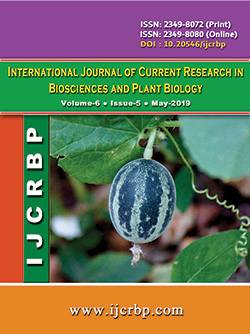 |
Online ISSN : 2349-8080 Issues : 12 per year Publisher : Excellent Publishers Email : editorinchiefijcrbp@gmail.com |
2Block Technology Manager, Agril. Technology Management Agency, Dept. of Agriculture, Govt. of Tripura
3Assistant Professor, Bihar Agricultural University, Department of Extension Education, Sabour, India
4District Project Manager, North Tripura District, North East Rural Livelihood Project, Govt. of India
Northeast India is known for its diverse nature of soil, climate, and topography. This region is rich in diversity of many fruits, vegetables, flowers particularly orchids, spices, bamboo and medicinal & aromatic plants. Among the commercial fruits of the country, maximum diversity in citrus, banana and jack fruit are found in Northeast India. A large number of diversity in other tropical and subtropical fruits belonging to the genera Garcinia, Artocarpus, Phyllanthus, Annona, Averrhoa, Persia, Aegle, Passiflora, Tamarindus, etc. are reported from the region. Northeast India is also rich in different genotypes of cucurbits, solanaceous vegetables, ginger, turmeric, bamboo, leafy vegetables, etc. Among the different ornamental agricultural crops, the region has the maximum diversity in orchids, fern and other flowering shrubs. Indigenous and minor horticultural crops available in the region are however not being exploited properly. These crops have the potentiality to alleviate the poverty, food and nutritional insecurity through processing and value addition. Most of these crops are rich in vitamins, minerals and such other bioactive molecules suitable for medicine, aromatic and food processing industries. Protocols for preparation of instant ginger candy; minimally processed ready-to-cook jack fruit; jam-jelly, fermented and non fermented beverages from different indigenous fruits and tutti-frutti from chow-chow have already been standardized. These value added products if produced commercially will go a long way in increasing the area under these crops and thereby enhancing farm income and nutritional security of the farmers. The aim is to preserve and promote agro-biodiversity in the region by conserving seeds of indigenous varieties of food crops. The concept of community seed banks at the grassroots level with farming communities among small and marginal farmers for conserving, borrowing, lending and multiplying their seeds. Seed banks can also facilitate farmers’ access to markets and give the farmers’ more choice over what they grow. Seed banks enable rural tribal villages to become less dependent on engineered high-yield varieties and on expensive inputs such as fertilizers and pesticides.
